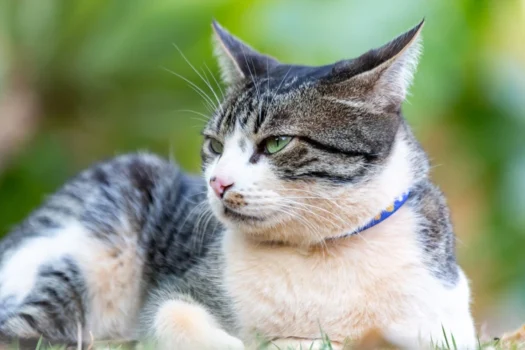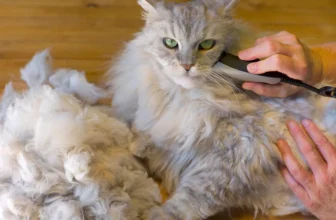Introduction
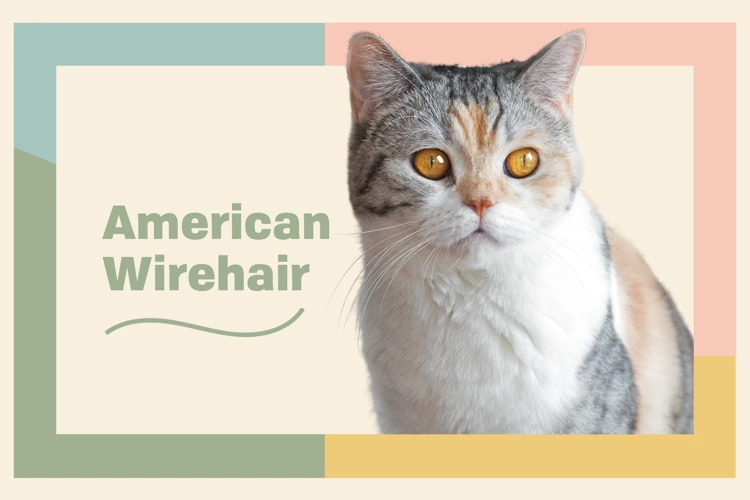
As a responsible cat owner, it’s important to ensure that your pet’s well-being is taken care of. One of the essential aspects of feline healthcare is nail care, particularly for American Wirehair cats. These cats are adored for their charming appearance, but their unique wiry hair and strong, curved nails require special attention. Neglecting regular nail care can lead to painful and uncomfortable consequences for your pet, as well as damage to your furniture and floors. In this article, we’ll explore the various reasons why cat nail care is crucial and provide step-by-step instructions and alternative options for keeping your American Wirehair cat’s nails healthy and well-tended.
Meet the American Wirehair Cat
The American Wirehair cat is a unique and distinctive breed with a special coat texture. These cats have a dense, springy coat that feels much like steel wool to the touch. Their fur is curly, crimped, and wiry in appearance. This distinct texture is due to a natural mutation that occurred in a farm cat from upstate New York in 1966, where it is believed that the breed began.
American Wirehair cats are medium-sized, muscular cats with broad heads and distinctive round ears. They are playful, energetic, and affectionate companions, and they love to be the center of attention. They are also quite intelligent and are known for their problem-solving abilities.
When it comes to nail care for American Wirehair cats, it is important to understand the anatomy and common nail problems. The nails of a cat are retractable and are made up of several layers, including the outer shell and the sensitive quick. Trimming the nails can prevent overgrowth and keep them healthy and strong. You can learn more about the anatomy of American Wirehair cat nails by clicking on this link.
As a cat owner, it’s important to understand the unique needs of your American Wirehair cat and the best practices for keeping them healthy and happy. This includes regular nail care, which can prevent pain, protect your furniture and floors, and reduce the risk of injury and infection. In the following sections of this article, we’ll dive deeper into the importance of regular nail care for American Wirehair cats, as well as alternative nail care options such as scratching posts and nail caps. You can also learn about when and how to properly trim your cat’s nails by clicking on this link. Additionally, we’ll discuss common nail problems that may arise and how to handle them.
The Importance of Regular Nail Care
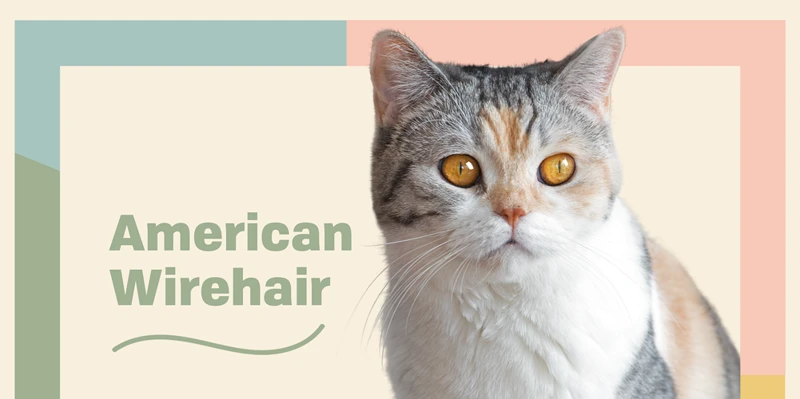
Proper grooming is essential to keeping your American Wirehair cat healthy and happy. One important aspect of grooming that is often overlooked is nail care. Although it may seem insignificant, neglecting your cat’s nails can lead to a number of health and behavioral issues. Regular nail care can prevent pain and discomfort, protect your furniture and floors, and reduce the risk of injury and infection. Let’s dive deeper into why regular nail care is crucial for your feline friend. To learn more about alternative nail care options, check out our article on American Wirehair Nail Trimming Alternatives. If you suspect your cat is experiencing common nail problems, you can read about them in our article on Common Nail Problems in American Wirehair Cats.
Prevent Pain and Discomfort
Regular nail care is an essential part of your American Wirehair Cat’s overall health and well-being. One important reason for regularly trimming your cat’s nails is to prevent pain and discomfort caused by overgrown nails. When cats’ nails grow too long, they can become sharp and start to curl, putting pressure on their toes and paw pads. This can cause pain and discomfort for your furry friend, making it difficult for them to walk and even leading to long-term damage to their toes and feet.
Trimming your cat’s nails regularly can help prevent this pain and discomfort from occurring. Not only will it make it easier for them to walk and climb, but it will also reduce the risk of them accidentally scratching themselves or others. Additionally, it can help to prevent your cat’s nails from getting caught in fabrics or furniture, which can also be painful.
To better understand the importance of regular nail care, here is a table highlighting the possible outcomes of not trimming your cat’s nails:
| Scenario | Possible Outcome |
|---|---|
| Not trimming your cat’s nails for an extended period of time | Sharp nails: Nails become acute and start to curl, leading to discomfort and pain for your cat |
| Your cat accidentally scratches themselves or another pet | Bleeding and infection: If the scratch is deep, it can lead to bleeding and the possibility of infection |
| Your cat catches their nail in furniture or fabric | Painful damage: Your cat can experience painful damage to their paw or nail from being stuck |
| Not trimming your cat’s nails can also lead to: | Ingrown nails: When cats’ nails grow too long, they can start to grow into their paw pads, which can become quite painful. |
As you can see, regularly trimming your American Wirehair Cat’s nails is essential to prevent pain and discomfort, as well as other potential issues and medical concerns. So, it’s important to make sure that nail care is included as part of their overall grooming routine.
Protect Your Furniture and Floors
As a cat owner, you’re likely well aware of the consequences of a feline’s sharp claws on your home’s furnishings and floors. The American Wirehair cat in particular, with its tough and wiry coat, can easily wreak havoc on your furniture and flooring with its razor-sharp nails. But, regular nail care can make a world of difference in protecting your home.
The Importance of Protecting Your Home
Not only can it be frustrating to see your belongings destroyed by your cat, but it can also be costly to replace or repair damaged furniture and floors. Regular nail care is essential to preventing damage and protecting your investment.
Nail Care Techniques to Protect Your Home
Trimming your cat’s nails regularly will help the nails stay blunt, reducing the likelihood of scratches on your furniture, carpets, and floors. In addition to trimming, providing appropriate scratching posts, mats, and pads can help redirect your cat’s scratching behavior from your furniture to designated scratching areas.
Scratching Posts and Pads
Scratching posts and pads provide a textured surface for your cat to scratch on, satisfying their natural scratching instincts. They come in a variety of materials such as sisal rope, cardboard, and carpet, so it’s important to experiment and find the one your cat prefers.
Nail Caps
Nail caps are another alternative to protect your furniture and floors. These are small, plastic caps that can be glued onto your cat’s nails. They come in a variety of colors, so you can have fun and accessorize your cat’s nails while protecting your home.
Regular nail care can help prevent pain and discomfort for your cat, reduce the risk of injury and infection, and protect your furniture and flooring. By incorporating scratching posts, mats, and pads, or even nail caps, you can redirect your cat’s scratching behavior and keep your home looking its best.
Reduce the Risk of Injury and Infection
Regular nail care for your American Wirehair cat is important not just for aesthetics, but it can also help in reducing the risk of injury and infection. As cats use their nails for defense, hunting, and play, longer nails can lead to accidental scratches and cuts. Long nails can also attract dirt and bacteria, which can cause infection to the nail bed and other soft tissues surrounding the nails.
To avoid such issues, it is important to include nail care in your cat’s regular grooming routine. Trimming the nails will help reduce the risk of injury and infection for your cat by keeping their nails short and clean.
Additionally, long nails can lead to ingrown nails or even breakage, which can be painful for your cat. Ingrown nails occur when the nails grow into the foot pads, which can lead to swelling, redness, and discomfort. Broken nails can also cause pain and can lead to bleeding. Trimming your cat’s nails regularly will prevent such incidents from happening.
Long nails can also cause discomfort and pain to your American Wirehair cat while walking or running. When the nails are too long, they may interfere with the cat’s natural gait and can cause joint and muscle pain. Proper nail care and trimming will help avoid such situations and will enable your furry friend to walk and run without any discomfort.
Regular nail care is critical in maintaining your American Wirehair cat’s health, as it can help in reducing the risk of injury and infection, prevent ingrown or broken nails, and avoid joint and muscle pain. Taking care of your cat’s nails is a simple but significant step in keeping them healthy and happy.
To learn more about how to trim your cat’s nails, continue reading the next section.
| Reasons why regular nail care is important: |
|---|
| Reduces the risk of injury and infection |
| Prevents ingrown or broken nails |
| Avoids joint and muscle pain |
When and How to Trim Your Cat’s Nails
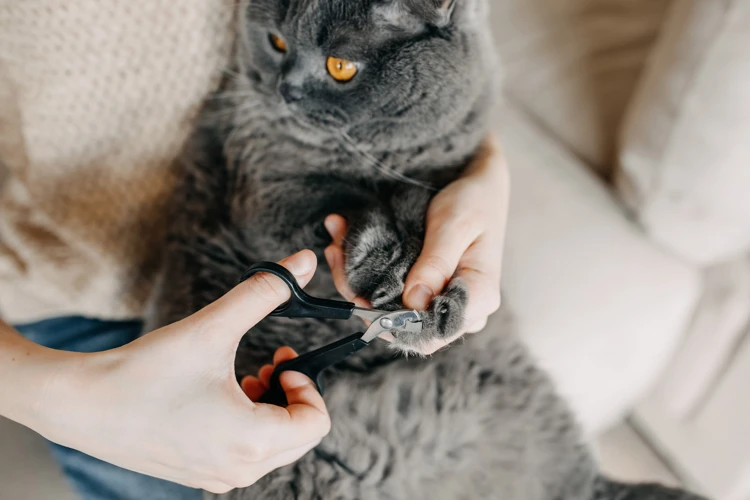
We all know how important it is to take care of our pets, but sometimes we forget about one essential aspect of their wellbeing – their nails. Regular nail care is particularly crucial for American Wirehair cats as their nails can easily become too long and cause discomfort, pain, and injury. It’s important to learn when and how to trim your cat’s nails to keep them healthy and happy. In this section, we’ll explore the signs your pet needs their nails trimmed, the supplies you’ll need, and step-by-step instructions to make the process stress-free for you and your cat.
Signs Your Cat Needs a Trim
Regular nail trims are an essential part of your American Wirehair Cat’s grooming routine. Knowing when to trim your cat’s nails can keep him healthy, comfortable, and prevent damage to furniture, floors, and other belongings. Here are some signs you should look out for, indicating it’s time to give your cat’s nails a trim:
- Scratching: If you notice that your cat is scratching furniture, carpets, or other surfaces more frequently than usual, or if he’s shredding your couch cushions, it’s usually a sign that his nails are too long and need attention.
- Snagging: Long nails are prone to snagging on things, causing discomfort and pain to your cat. If you notice him frequently biting or licking his nails, or if you see them getting caught on fabrics or carpets, it’s time for a trim.
- Clicking sound: When your cat walks on hard surfaces like wood or linoleum, his long nails can make a distinct clicking sound. This is usually a good indication that it’s time to give those nails a snip.
- Curved shape: Overgrown nails can become long and curved, making it difficult for your cat to walk or scratch comfortably. If you find that your cat is hesitating before jumping or scratching, or he’s having trouble retracting his nails, it’s time to break out the nail clippers.
Regular nail trims are not only important for your cat’s overall health, but they can also help prevent damage to your home and belongings. With a little bit of patience and practice, you can easily learn to trim your cat’s nails at home.
The Supplies You’ll Need
To trim your American Wirehair cat’s nails at home, you’ll need a few essential supplies. Here’s a list of the supplies you’ll need to get started:
| Nail Clippers | A specialized nail clipper designed for cats is necessary to safely cut through the thick and tough nails of American Wirehair cats. Scissors or human nail clippers should not be used as they can easily crush the nail, causing pain and injury. |
| Nail File | A nail file can be used to smooth and round out the edges of the nails after clipping. This will help prevent the nails from becoming too sharp and causing damage to surfaces. |
| Treats | Treats can be an excellent way to keep your cat calm and relaxed during the nail trimming process, encouraging positive behavior. Use treats sparingly and reward your cat after each step to ensure they stay calm and cooperative. |
| Towel or Blanket | Wrapping your American Wirehair cat in a towel or blanket can help provide comfort and reduce anxiety. This will also make it easier to hold your cat still during the trimming process. |
Having these essential supplies on hand will make the nail trimming process much easier and safer. Make sure to purchase high-quality nail clippers and a file to avoid causing any pain or injury to your cat. It’s also important to have treats and a towel or blanket to provide comfort and keep your cat calm throughout the process. With these supplies and a little patience, you’ll be able to maintain your cat’s nail health in no time!
Step-by-Step Instructions for Trimming Nails
Trimming your American Wirehair cat’s nails is an important part of regular grooming. If you’re new to trimming cat nails, it may seem intimidating at first. But with a little practice and patience, it can become a routine task for both you and your feline friend.
Here are step-by-step instructions on how to trim your cat’s nails:
| Step 1: | Choose a quiet, comfortable and well-lit area for the nail trimming. |
| Step 2: | Prepare the supplies – cat nail clippers, styptic powder, treats, and a towel or blanket to keep your cat still. |
| Step 3: | Take your cat onto your lap and gently wrap them in the towel/blanket, leaving only the paw you’re working on exposed. |
| Step 4: | Gently press the paw pads to extend the claw. Be careful not to squeeze the toe or hurt your cat. |
| Step 5: | Identify the pink quick, which is the blood vessel inside the nail. Avoid cutting into it as it is sensitive and can bleed. Trim only the sharp tip of the white part of the nail. |
| Step 6: | Hold the nail clipper at a right angle to the nail and make a quick, clean cut. If you’re unsure, you can start by trimming a small part of the nail. |
| Step 7: | If your cat does not like the procedure and moves too much, take a break and try again later. Provide lots of encouragement and treats to reinforce positive behavior. |
| Step 8: | If you accidentally cut the quick and the nail starts to bleed, don’t panic. Apply styptic powder to the bleeding area and apply a gentle pressure with a tissue or cotton ball to stop the bleeding. |
Remember to only trim the nails of your American Wirehair when they need it. Over-trimming can cause pain and bleeding, which can make the process stressful for both you and your cat. With these easy-to-follow steps, you can ensure that your cat’s nails are trimmed safely and effectively.
Dealing with Resistant Cats
When it comes to trimming your American Wirehair cat’s nails, you might encounter some resistance from your feline friend. It’s important to remember that cats are generally not fond of having their paws touched, and may become agitated or even aggressive during the nail trimming process. However, there are some strategies you can use to make the experience as stress-free as possible for both you and your cat.
1. Start Slowly: If your cat is particularly resistant to nail trimming, start by simply touching your cat’s paws and giving them a treat. Gradually work up to holding their paw in your hand for a few seconds at a time, before moving on to the actual nail trimming.
2. Use Positive Reinforcement: Reward your cat for good behavior during the nail trimming process. Give them treats and plenty of verbal praise for staying calm and still.
3. Use A Soothing Tone: Speak to your cat in a calm, soothing tone during the nail trimming process. Avoid raising your voice, as this can make your cat feel more anxious.
4. Ask For Help: If your cat is particularly resistant to nail trimming, don’t be afraid to ask for help from a friend or family member. They can hold your cat still while you trim their nails.
5. Consider Professional Grooming: If all else fails, consider taking your American Wirehair cat to a professional groomer for their nail trimming. Groomers have experience dealing with resistant cats and can perform the task quickly and efficiently.
Remember, nail trimming is an important aspect of your cat’s overall health and well-being. If your cat is extremely resistant to nail trimming and you are unable to handle the task, consult your veterinarian for additional guidance and support.
Alternative Nail Care Options
As much as we’d love for our furry friends to sit still for a nail trim, sometimes the task can be daunting. But fear not, as there are alternative nail care options available for American Wirehair cats. These options not only save time and stress, but they can also provide entertainment for your furry friend. Let’s explore some of the creative ways to give your cat the nail care they need.
Scratching Posts and Pads
As mentioned earlier, regular nail care for your American Wirehair Cat is important not only for their health and safety but also for safeguarding your furniture and floors. While trimming their nails is an effective method, there are also alternative options available to you.
Scratching posts and pads are one such option. They are designed to provide a safe and designated area for your cat to scratch and sharpen their nails. This not only protects your furniture and carpets from being torn apart, but also allows your cat to engage in a natural behavior that is important for their well-being.
There are various types of scratching posts and pads available in the market, and choosing the right one for your cat can make a significant difference. Here are a few things to consider:
| Type | Material | Size | Location |
|---|---|---|---|
| Vertical posts | Sisal, carpet, cardboard | Tall enough for your cat to stretch | In a visible and accessible area of your home |
| Horizontal pads | Sisal, carpet, cardboard | Large enough for your cat to lie on | Near the areas where your cat spends most of their time |
| Scratching boards | Sisal, carpet, cardboard | Varying sizes available | Mounted on a wall or placed on a flat surface |
It is also important to note that not all cats prefer the same type of scratching surface. Some may prefer a rough and sturdy material like sisal, while others may prefer a soft and cushioned surface. You may need to experiment with different materials to find out what works best for your cat.
Lastly, it is important to train your cat to use the scratching post or pad in order to make it an effective alternative to trimming their nails. Use positive reinforcement and treats to encourage them to use it, and avoid punishing them for scratching inappropriately.
Scratching posts and pads are a great alternative to trimming your American Wirehair Cat’s nails, and can provide numerous benefits to both you and your feline friend. By choosing the right type and material, and training your cat to use it, you can ensure that they have a safe and designated area to scratch while also protecting your furniture and floors.
Nail Caps
One alternative option for maintaining your American Wirehair cat’s nails is to use nail caps. These are small plastic caps that fit over the cat’s nails, preventing them from causing damage when they scratch. Nail caps come in a range of colors and sizes, so you can choose the ones that best suit your cat’s needs.
Pros of using nail caps:
- Protects against scratching damage
- Can last up to 4-6 weeks
- Easy to apply with included adhesive
- Can be a good option for cats that dislike nail trimming
Cons of using nail caps:
- Need to be replaced every few weeks
- May not stay on if the cat is very active and scratching frequently
- Can be expensive over time
- May not allow the cat to fully retract their claws, impacting their ability to defend themselves in the wild
If you choose to use nail caps, it’s important to check them regularly for any signs of wear or damage. If a cap becomes loose or falls off, it can pose a choking hazard to your cat. Additionally, even if your cat has nail caps, it’s still important to provide them with a scratching post or pad to keep their claws healthy and reduce their natural urge to scratch.
Nail caps can be a convenient and effective option for keeping your American Wirehair’s claws from causing damage, but they should be used in conjunction with other forms of nail care and monitored closely to ensure your cat’s safety.
Conclusion
In conclusion, regular nail care is crucial to your American Wirehair cat’s overall health and well-being. Not only does it prevent pain and discomfort, but it also protects your furniture and floors from being scratched and damaged. Additionally, it reduces the risk of injury and infection for both your cat and yourself.
By keeping an eye on the signs that your cat needs a nail trim and following the step-by-step instructions we’ve provided, you can ensure that your cat’s nails are always at the optimal length. It is also worth considering alternative nail care options such as scratching posts and pads or nail caps to further protect your furniture and floors.
Remember that trimming your cat’s nails is not just about physical maintenance, but it can also help strengthen your bond with your furry companion. Providing regular nail care can be a way of showing your love and care for your pet.
Overall, investing time and effort in your American Wirehair cat’s nail care can go a long way in ensuring their overall health and happiness. So, make sure to add nail care to your cat’s grooming routine and enjoy a happy, healthy, and scratch-free life with your feline friend.
Frequently Asked Questions
What is the history of American Wirehair cats?
American Wirehair cats were first documented in the 1960s and are believed to be related to the American Shorthair breed. The first American Wirehair cat was born in New York in 1966.
Do American Wirehair cats need regular grooming?
Yes, American Wirehair cats have wiry, dense coats that require regular brushing to prevent matting and tangling. They also benefit from occasional baths to keep their fur shiny and healthy.
Can I trim my cat’s nails at home?
Yes, with the proper tools and technique, you can safely trim your cat’s nails at home. However, if you are unsure about how to do it properly, it is best to seek guidance from a veterinarian or professional groomer.
How often should I trim my cat’s nails?
It is generally recommended to trim your cat’s nails every 4-6 weeks. However, this can vary depending on your cat’s activity level and how quickly their nails grow.
What are nail caps?
Nail caps are small plastic covers that can be glued onto your cat’s claws to prevent damage to furniture and floors. They come in a variety of colors and are a great alternative for cats that do not tolerate regular nail trimming.
How do I know if my cat’s nails are too long?
You may notice your cat’s nails snagging on carpets or furniture, or hear clicking sounds as they walk across hard surfaces. Another sign is if you feel the tips of the nails against your skin when your cat kneads or scratches.
What should I do if my cat is resistant to nail trimming?
If your cat is resistant to nail trimming, try gradually getting them used to the process by handling their paws regularly and giving them treats during the process. You can also try using a specialized nail trimmer designed for cats.
Why do cats scratch?
Cats scratch to sharpen their claws, mark their territory, and stretch their muscles. Providing your cat with appropriate scratching surfaces can help reduce damage to furniture and other household items.
What is the best type of scratching post for American Wirehair cats?
American Wirehair cats enjoy a variety of scratching surfaces, including sisal rope, cardboard, and carpeted posts. It is important to provide a sturdy scratching post that is tall enough for your cat to stretch out fully.
Do American Wirehair cats get along well with other pets?
American Wirehair cats generally get along well with other pets, including dogs and other cats. However, it is important to introduce them slowly and supervise their interactions to ensure everyone gets along safely.

